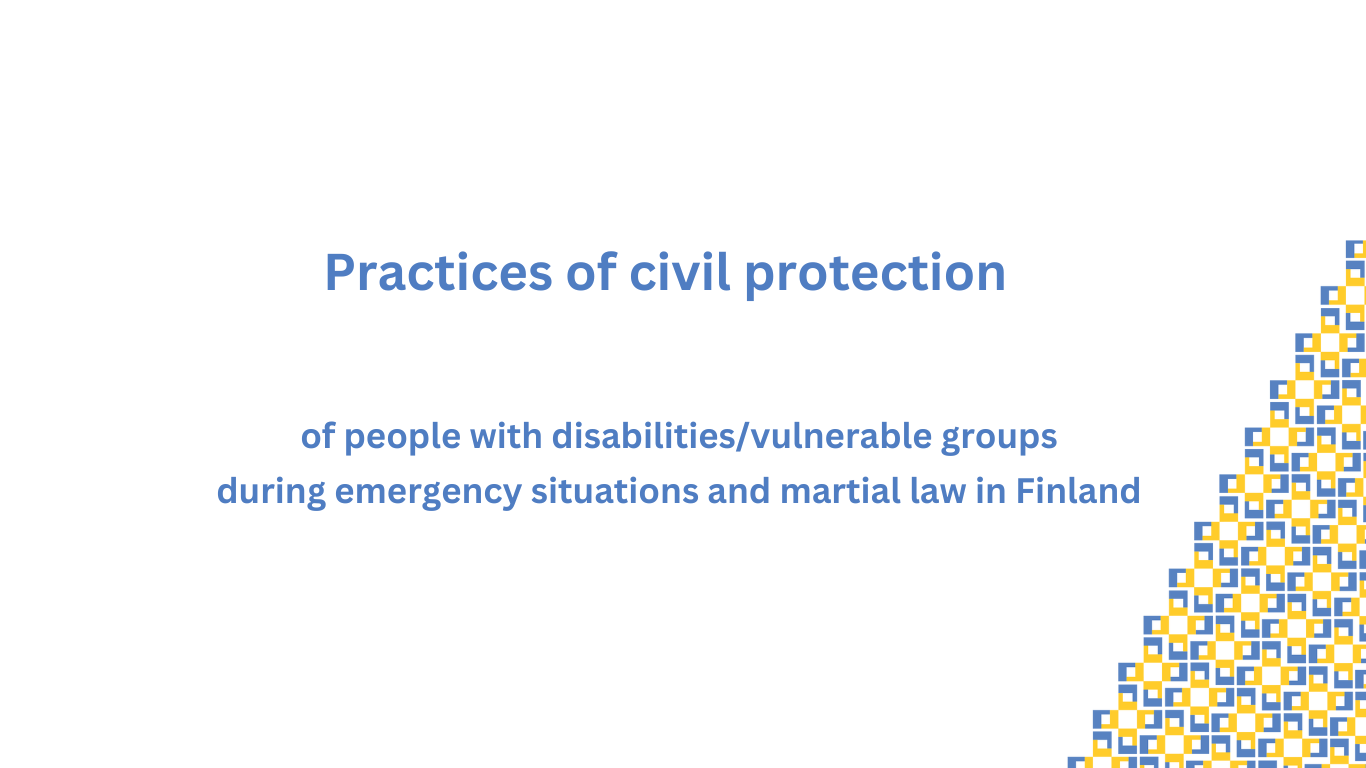Practices of civil protection

of people with disabilities/vulnerable groups during emergency situations and martial law in Finland.
This publication was prepared by Colonel (ret.) Kimmo Lehto within the framework of activities of the National Platform for Resilience and Social Cohesion. The initiative is being implemented with the financial support of the European Union within the project “Building Resilience in Conflict Through Dialogue”. The content of this publication is the sole responsibility of its authors and does not necessarily reflect the official views of the European Union.
Introduction
Finland has been preparing to protect its population for a long time. The civil protection system was not dismantled after the end of the cold war. In Finland, everyone is treated equally. This also means people with disabilities and other vulnerable groups. These vulnerable groups must be taken into account in all measures to protect the population.
Accidents and exceptional circumstances must be prevented and prepared for even in normal situations. Instructions for people in case of accidents must be made in advance and their availability must be ensured if something dangerous happens. Both buildings and various functions must be as accessible as possible, and there must be sufficient instructions for this. It is also the duty of everyone living in Finland to prepare themselves for exceptional situations.
Under normal circumstances, people with disabilities and other vulnerable groups are taken care of by healthcare and social authorities, who are also responsible for services and assistance. Public services are supplemented by private companies and various organizations. They are also a significant and quick reserve for the authorities. They also do significant training work that serves especially those in the most vulnerable position in accident and dangerous situations.
When there is an accident, the necessary rescue, health and social service providers must be able to be alerted quickly. Responsibilities and management relationships must also be clear. The population must also be quickly warned of possible dangerous situations. The most important principles and activities, which are applied depending on the situation, have been collected in the instructions for evacuation and the evacuation centre. The instructions contain many things to consider regarding people with disabilities and other vulnerable groups.
In emergency conditions the alarming of people must be secured. The civil defence shelters will be put in to use so that at least people in urban areas can quickly get protection.
If the Government decides that from some region’s population will be transferred, the evacuations are more extensive, the evacuees’ need for accommodation is likely to last longer, and the evacuees are moved further away from their starting places. Moving or evacuating hospitals and treatment units is challenging. To handle the situation in exceptional circumstances, the authorities need additional powers.
There are thousands of associations in Finland that can support the authorities in accident situations and emergency situations, the most important being the Finnish Red Cross. A few functions of the associations are presented in the appendices.
You can get acquainted with the text by following the link.
